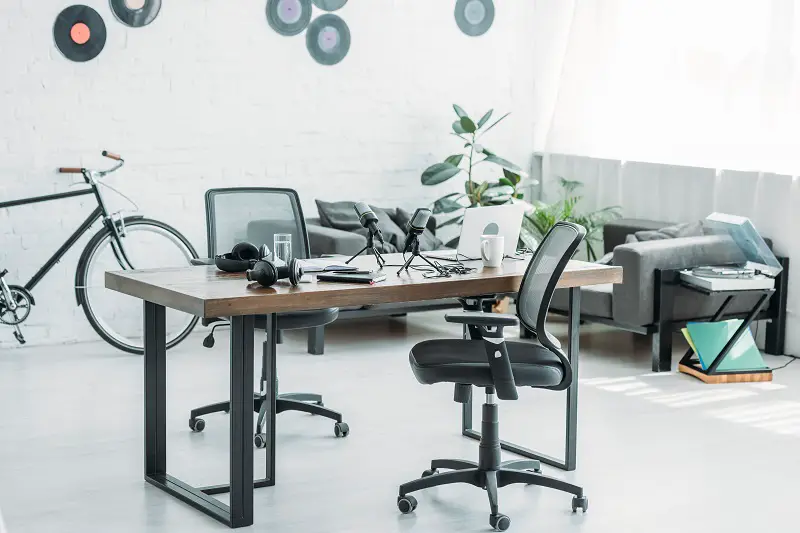The concept of workspace has undergone a remarkable transformation. No longer confined to traditional notions, classrooms and offices alike are embracing innovative furniture trends that cater to the evolving needs of learners and professionals. Join us on a journey through the exciting evolution of workspace design, exploring the latest trends in classroom and office furniture.
Classroom Furniture: A Pedagogical Revolution
Classroom furniture has moved far beyond the rigid rows of desks and uncomfortable chairs that once dominated learning spaces. The modern classroom is a dynamic environment where collaboration and flexibility are key. Ergonomics takes centre stage, with adjustable chairs and desks that cater to the diverse needs of students.
Innovative seating arrangements have become the norm, with modular furniture allowing for easy reconfiguration of the learning space. Collaborative tables, mobile seating, and writable surfaces transform classrooms into interactive hubs, promoting engagement and participation.
From Lecture Halls to Active Learning Spaces
Traditional lecture halls are making way for active learning spaces, and the furniture is following suit. Flip-top desks, writable walls, and multifunctional seating accommodate a variety of teaching styles. The emphasis is on creating an environment that fosters communication and adaptability.
Colour plays a significant role in the evolution of classroom furniture, with vibrant hues and playful designs creating an inviting atmosphere. This departure from the sterile, institutional look of the past contributes to a positive and inspiring learning environment.
Office Furniture: Rethinking the Modern Workspace
Similarly, offices are undergoing a paradigm shift in workspace design, with a focus on creating environments that promote employee well-being, collaboration, and productivity. Open-plan offices, once a symbol of modernity, are being reconsidered, giving way to a more balanced approach that incorporates private and communal spaces.
Ergonomic office furniture has become a cornerstone of modern workspace design. Height-adjustable desks, ergonomic chairs, and wellness-centric accessories contribute to a healthier and more comfortable work environment. Employers are recognising the impact of office furniture on employee satisfaction and, consequently, overall productivity.
Agile Workstations and Collaborative Hubs
The rise of remote work and the flexibility it affords have influenced the design of office furniture. Agile workstations with modular components allow employees to customise their workspace based on the tasks at hand. Collaborative hubs equipped with flexible seating arrangements and integrated technology encourage teamwork and idea sharing.
In response to the changing nature of work, breakout areas have become a staple in modern offices. These spaces, equipped with comfortable lounge furniture and communal tables, provide employees with informal settings for meetings, discussions, and individual work.
Sustainability and Aesthetics in Workspace Design
Sustainability is a key consideration in both classroom and office furniture trends. Eco-friendly materials, recyclable components, and responsible manufacturing processes are becoming increasingly important. This shift towards sustainability aligns with the values of organisations and institutions striving to reduce their environmental impact.
Aesthetics also play a pivotal role in the evolution of workspace design. Modern furniture designs prioritise clean lines, minimalist aesthetics, and a harmonious blend of form and function. Neutral colour palettes and natural materials create visually appealing spaces that contribute to a sense of calm and focus.
The Future: Fusion of Learning and Work Environments
As we journey through the evolution of workspace, one trend stands out – the blurring of boundaries between learning and work environments. The modern office takes inspiration from educational settings, incorporating flexible furniture and collaborative spaces. Similarly, classrooms are adopting elements traditionally associated with offices, such as quiet zones and ergonomic furniture.
This fusion of learning and work environments reflects a holistic approach to designing spaces that cater to the multifaceted needs of individuals. It acknowledges that learning is a lifelong pursuit, and the spaces we inhabit should support continuous growth, creativity, and collaboration.
A Harmonious Blend of Form and Function
The evolution of workspace design, encompassing both classroom and office furniture trends, speaks to a broader shift in how we perceive and utilise our environments. It’s a journey marked by adaptability, collaboration, and a commitment to creating spaces that not only serve their functional purposes but also inspire and nurture the individuals who inhabit them. Whether in the classroom or the office, the evolving trends in furniture design invite us to reimagine our spaces as dynamic, flexible, and aesthetically pleasing hubs of productivity and learning.




